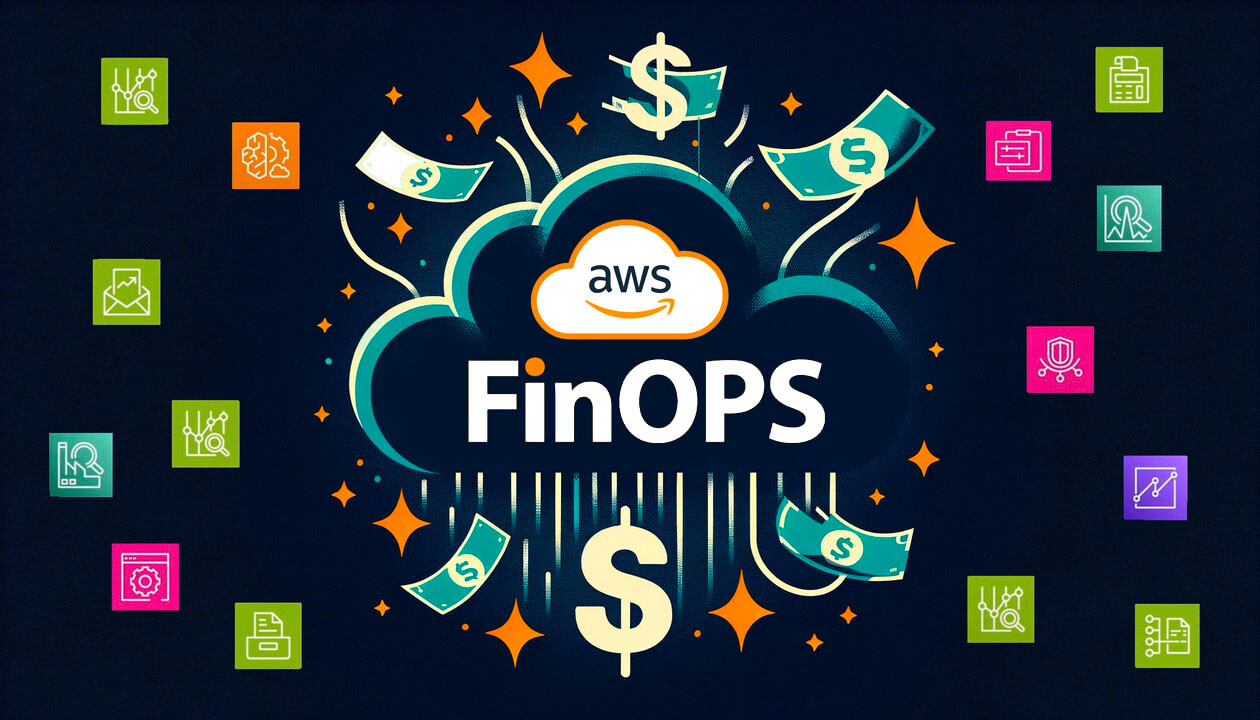In the rapidly evolving digital landscape, organizations face increasing pressure to innovate while managing costs effectively. This challenge has given rise to the concept of FinOps (Financial Operations), which emphasizes the need for financial accountability in cloud spending and project management. In the first part of our series, we explored the basics of FinOps and its significance in driving financial awareness among teams. In this second installment, we will dive deeper into how organizations can accelerate innovation by shifting left in FinOps—integrating financial considerations earlier in the development process.
Understanding the Shift Left Concept
The shift-left approach, originally rooted in software development and testing, advocates for addressing potential issues earlier in the lifecycle rather than waiting until later stages. This principle encourages teams to focus on quality and efficiency from the outset, which can save time, reduce costs, and foster innovation.
In the context of FinOps, shifting left means integrating financial considerations into every phase of the development process—from initial planning and budgeting to deployment and ongoing maintenance. By making financial insights an integral part of the development lifecycle, organizations can create a culture that values both innovation and cost management.
The Importance of Shifting Left in FinOps
1. Enhancing Collaboration Across Teams
Shifting left in FinOps promotes collaboration between finance, development, and operations teams. Traditionally, financial discussions often occur at the end of a project, leading to misalignment and unexpected costs. By integrating financial considerations early, teams can communicate openly about budget constraints, resource allocation, and cost projections.
Enhanced collaboration leads to better decision-making and allows teams to collectively identify innovative solutions that align with financial goals. When finance professionals participate in early discussions, they can provide valuable insights that help shape project scopes, timelines, and priorities.
2. Empowering Informed Decision-Making
Shifting left enables teams to make more informed decisions about their projects. When financial implications are considered early, teams can evaluate the cost-effectiveness of their choices. For instance, they can assess whether investing in a particular technology will yield sufficient returns or if reallocating resources to another project might lead to greater innovation.
By integrating real-time financial data into development processes, teams can continuously evaluate their spending and make adjustments as needed. This proactive approach ensures that financial considerations are not an afterthought but a core component of the innovation process.
3. Accelerating Time to Market
One of the key benefits of shifting left is the reduction of bottlenecks that often arise from financial misalignment later in the project lifecycle. When teams address budgetary concerns at the outset, they can streamline processes and avoid costly delays.
By reducing the time spent resolving financial issues, organizations can accelerate their time to market for new products and features. This agility is critical in today’s competitive landscape, where being first to market can significantly influence success.
4. Optimizing Resource Allocation
Shifting left in FinOps provides greater visibility into resource usage and costs. By analyzing financial data in real time, teams can identify areas of overspending or underutilization. This insight enables organizations to optimize resource allocation, ensuring that funds are directed toward the most promising and innovative projects.
For example, if a team realizes that a particular service is underused, they can adjust their resource allocation or explore more cost-effective alternatives. This flexibility not only saves money but also empowers teams to experiment with new ideas and technologies without the fear of financial repercussions.
Strategies for Implementing Shifting Left FinOps
To successfully shift left in FinOps, organizations can adopt several key strategies:
1. Integrate Financial Tools into Development Workflows
Incorporating financial tools directly into development environments is essential for shifting left. This integration allows teams to access budgeting and cost data seamlessly, enabling real-time tracking of expenditures.
For example, organizations can implement cloud cost management tools that provide insights into spending patterns. By making this information readily available, teams can make informed decisions that align with both innovation goals and budget constraints.
2. Establish Cross-Functional Teams
Creating cross-functional teams that include members from finance, development, and operations fosters collaboration and ensures that financial insights are considered at every stage of the project. These teams can work together to define budgetary guidelines, identify potential risks, and explore innovative solutions.
Cross-functional teams can also facilitate knowledge sharing, allowing finance professionals to educate developers on cost management best practices and vice versa. This mutual understanding is critical for fostering a culture of financial accountability and innovation.
3. Utilize Cloud Cost Management Tools
With many organizations adopting cloud services, leveraging cloud cost management tools becomes essential for effective FinOps. These tools can provide real-time insights into resource usage, helping teams monitor costs and adjust their strategies accordingly.
For instance, tools like CloudHealth and Spot.io allow organizations to visualize their cloud spending and identify areas for optimization. By integrating these insights into development processes, teams can make data-driven decisions that enhance both financial performance and innovation.

4. Encourage a Culture of Financial Awareness
Fostering a culture of financial awareness across the organization is crucial for the successful implementation of FinOps. Providing training and resources that highlight the importance of financial considerations in decision-making can empower teams to take ownership of their budgets.
Organizations can conduct workshops and training sessions to help developers understand the financial implications of their choices. By emphasizing the value of financial awareness, companies can create an environment where innovation thrives alongside fiscal responsibility.
Case Studies: Success Stories of Shifting Left FinOps
Example 1: TechCorp
TechCorp, a leading software development company, decided to shift left in their FinOps practices. By integrating financial tools into their Agile development process, they experienced significant improvements. The company adopted cloud cost management tools that provided real-time insights into spending.
As a result, TechCorp achieved a 30% reduction in project delays due to budget overruns. This shift allowed teams to launch new features faster, enhancing their competitive edge in the market. Additionally, cross-functional teams became a norm, fostering a collaborative environment that encouraged innovation.
Example 2: HealthInnovate
HealthInnovate, a healthcare technology firm, established cross-functional teams that included finance experts in their product development cycles. This integration led to a deeper understanding of budgetary constraints and innovative opportunities.
By analyzing financial data early in the development process, HealthInnovate identified cost-saving opportunities that allowed them to reallocate funds to high-impact projects. This approach resulted in a successful launch of a new patient care solution that significantly improved healthcare outcomes.
Challenges and Solutions in Shifting Left FinOps
While shifting left in FinOps offers numerous benefits, organizations may encounter challenges during implementation. Here are some common obstacles and their solutions:
1. Addressing Resistance to Change
Change management is critical when implementing new processes, and resistance from team members is a common challenge. To address this, organizations should communicate the benefits of shifting left clearly. Involving teams in the transition and celebrating early successes can help alleviate concerns.
For example, showcasing the positive outcomes achieved through the shift can motivate team members to embrace the new approach. Regular updates and feedback sessions can also foster a sense of ownership and collaboration.
2. Ensuring Tool Integration
Integration challenges may arise when organizations attempt to incorporate new financial tools into existing workflows. To overcome this, organizations should conduct thorough assessments of their current processes and choose tools that seamlessly integrate with existing systems.
Investing in user-friendly tools that require minimal training can also ease the transition. Providing support during the implementation phase and encouraging team members to share their experiences can enhance tool adoption.
3. Maintaining Financial Transparency
One of the challenges of shifting left is ensuring that financial information remains transparent across teams. To promote transparency, organizations can implement regular financial reviews and reporting processes.
Encouraging open communication about budgets, expenditures, and financial goals can create an environment where everyone feels accountable for financial performance. This transparency fosters a culture of collaboration and innovation.
The Future of FinOps and Innovation
As organizations continue to embrace digital transformation, the role of FinOps will only grow in importance. Shifting left in FinOps is not just a trend; it’s a strategic approach that can significantly enhance innovation.
Embracing Continuous Improvement
The future of FinOps lies in its ability to adapt and evolve continuously. Organizations should be open to revisiting their FinOps strategies regularly to ensure they align with changing business needs and technological advancements.
By fostering a culture of continuous improvement, organizations can stay agile and responsive to market demands. This adaptability is essential for driving innovation and maintaining a competitive edge.
Expanding Collaboration Beyond Departments
As organizations increasingly recognize the value of cross-functional collaboration, the future of FinOps may involve expanding partnerships beyond traditional departments. Engaging with external stakeholders, such as vendors and customers, can provide valuable insights that inform financial decisions.
For example, collaborating with cloud service providers can help organizations optimize their spending and identify innovative solutions that enhance service delivery. By fostering a broader ecosystem of collaboration, organizations can drive innovation and improve financial performance.
Conclusion
In this second installment of our series on shifting left FinOps, we have explored the transformative potential of integrating financial operations early in the development process. By enhancing collaboration, empowering informed decision-making, and optimizing resource allocation, organizations can accelerate innovation while maintaining financial health.
As we move forward, embracing these practices will not only drive organizational success but also create a more innovative and responsive landscape in the ever-evolving digital world. The shift left approach in FinOps empowers teams to innovate boldly while ensuring fiscal responsibility, ultimately leading to a sustainable and successful future. Embrace the shift left approach and watch your innovation soar!
you may also read


